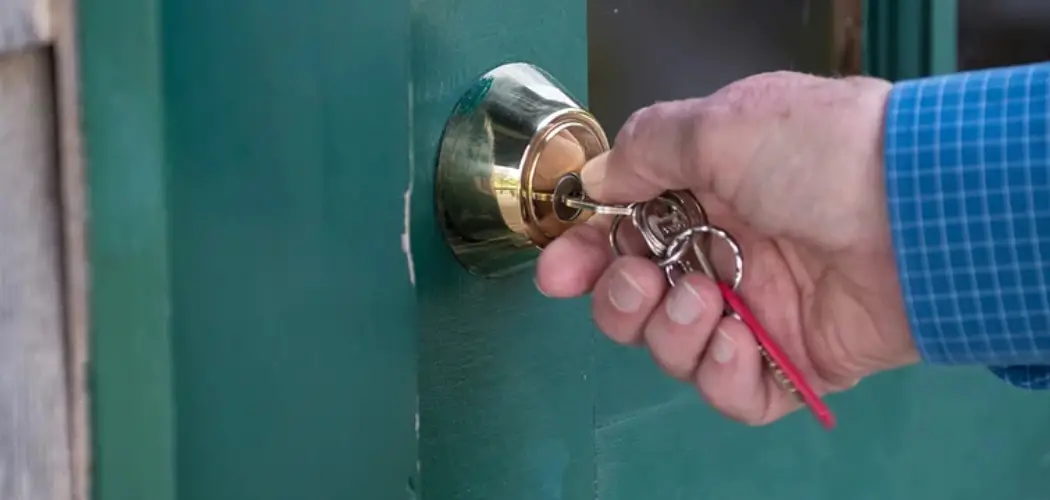Putting locks on cabinet doors is an essential step to secure your belongings, especially if you have valuable items in your cabinets. It provides added protection against theft and unauthorized access. With the increase in crime rates, it’s becoming more vital to take precautions to safeguard our possessions.
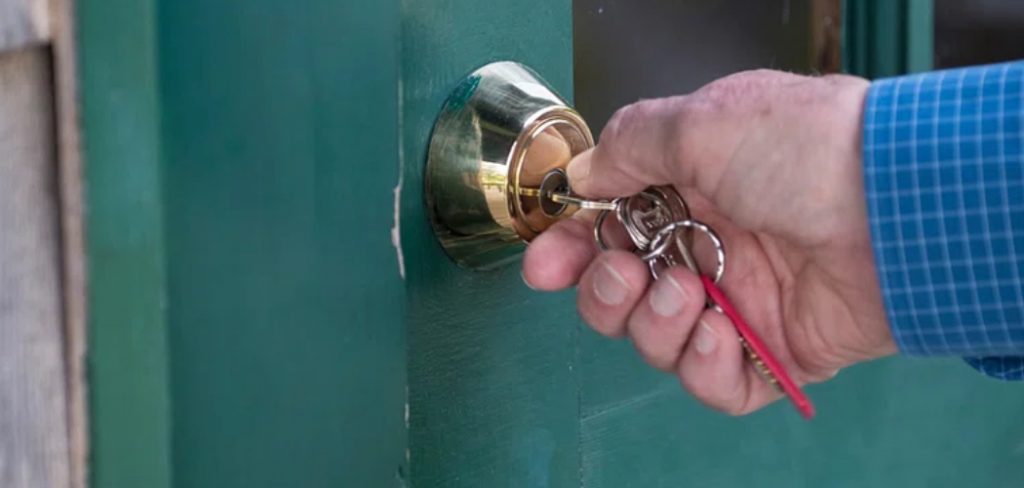
The main advantage of putting locks on cabinet doors is that you can ensure the safety and security of your belongings. Locks are essential for any cabinet, whether it’s in your home or office, to keep important and valuable items safe from theft or damage.
You can find step-by-step instructions on how to put locks on cabinet doors in this blog article.
Types of Locks and Installation Techniques
Locks play a crucial role in ensuring the security of our homes, offices, and other buildings. They provide protection against theft, intruders, and unauthorized access. When it comes to choosing a lock for your property, there are various types available in the market with different features and installation techniques.
Types of Locks:
1. Traditional Key Locks
Traditional key locks are still widely used and come in different shapes, sizes, and materials. They have a simple design that consists of a lock cylinder, keyhole, and pins. The key is inserted into the keyhole and rotated to align the pins inside the cylinder, allowing the lock to open. These locks are relatively easy to install and are suitable for both residential and commercial use.
2. Combination Locks
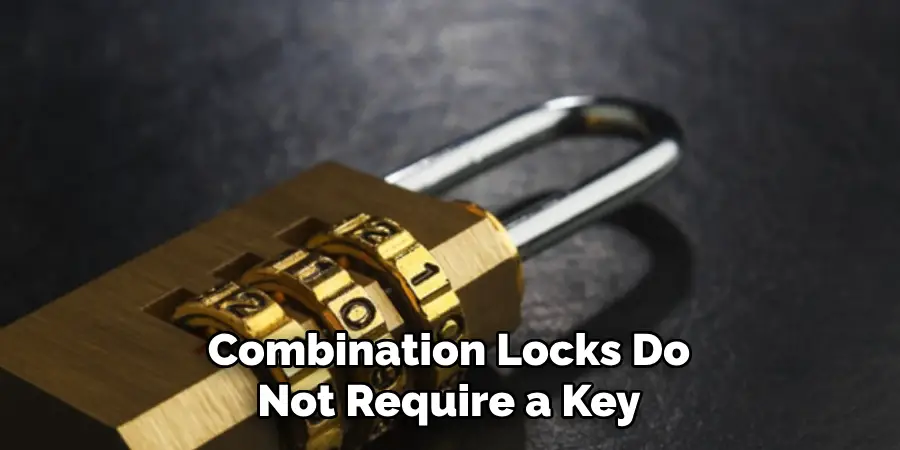
Combination locks do not require a key and instead use a sequence of numbers or symbols to open the lock. They can be found in different forms, such as padlocks, door locks, and safe locks. These types of locks are ideal for high-security areas as they are more difficult to pick or break.
3. Electronic Locks
Electronic locks offer a more advanced level of security as they use electronic components, such as keypads, fingerprint scanners, or proximity sensors. They are commonly used in commercial buildings and high-end homes. These locks provide convenience as they can be easily programmed to allow access for specific individuals and keep a record of entry and exit times.
4. Smart Locks
Smart locks are the latest addition to the lock industry, integrating technology with traditional locks. They can be controlled remotely through a smartphone app or voice commands, making them convenient for homeowners who want to monitor and control access to their property from anywhere. Some smart locks also offer features such as keyless entry, temporary access codes, and activity logs.
Step-by-step Instructions for How to Put Locks on Cabinet Doors
Step 1: Inspect the Cabinet Doors

Before we begin, make sure you have all the necessary materials and tools to complete this task. Inspect the cabinet doors to ensure they are in good condition and can support a lock. There are various types of locks available for cabinet doors, such as key locks, combination locks, and magnetic locks. Choose the type that best suits your needs and budget.
Step 2: Measure and Mark the Placement of the Lock
Using a ruler or measuring tape, measure and mark where you want to place the lock on each cabinet door. Make sure the placement is consistent for all doors. Using a drill with an appropriate size bit, carefully drill holes at the marked locations on the cabinet doors. Make sure to follow the instructions provided by the lock manufacturer.
Step 3: Install the Lock
Place the lock in the drilled holes and secure it using screws or any other tools provided with the lock. Make sure it is tightly attached to the door. Before proceeding, make sure to test the lock by locking and unlocking it a few times. This will ensure that it is properly installed and working correctly.
Step 4: Install Additional Locks (If Needed)
If you have multiple cabinet doors, repeat steps for each door. You may also consider installing additional locks for added security if necessary. If the lock is not aligned properly or needs minor adjustments, use a screwdriver to make necessary changes. Make sure the lock is working smoothly and securely.
Step 5: Add finishing touches
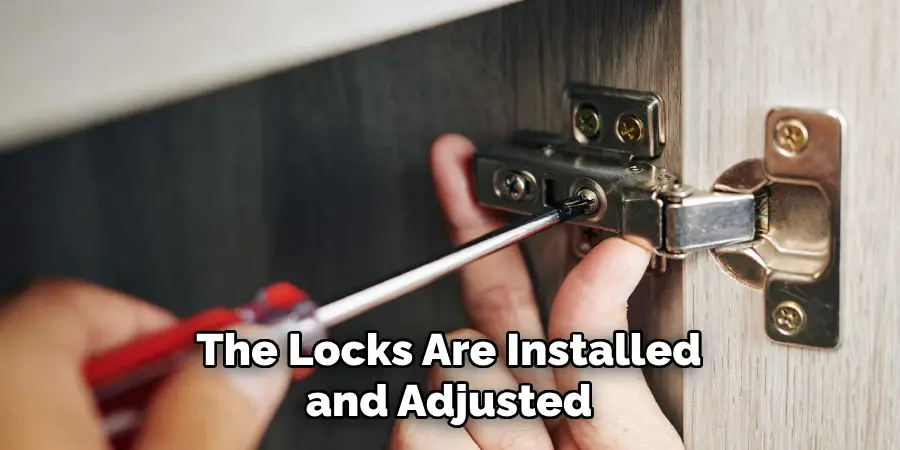
Once the locks are installed and adjusted, touch up any scratches or marks caused by drilling. You can also add decorative elements to cover up the locks if desired. Make sure to keep your spare keys in a safe and easily accessible place. This will come in handy in case you forget the combination or lose the key.
By following these step-by-step instructions, you can easily put locks on your cabinet doors and ensure the safety of your belongings. Remember to regularly check and maintain your locks to keep them in good working condition. Additionally, always make sure to keep your keys in a safe place and never share them with anyone unauthorized.
Safety Tips for How to Put Locks on Cabinet Doors
- Always Read the Instructions: Before attempting to put locks on cabinet doors, it is important to carefully read and understand the instructions provided by the manufacturer. This will ensure that you use the lock correctly and avoid any potential safety hazards.
- Choose the Right Type of Lock: There are various types of cabinet door locks available in the market, such as key locks, combination locks, and magnetic locks. Choose the one that best suits your needs and provides the desired level of security.
- Measure Before Installing: Before buying a lock, make sure to measure the thickness and width of your cabinet doors. This will help you choose a lock that fits perfectly and does not cause any damage to the door or frame during installation.
- Use Childproof Locks for Cabinets With Hazardous Items: If you have cabinets that contain hazardous materials, medicines or cleaning products, it is important to use childproof locks. These locks are designed to prevent young children from accessing the contents of the cabinet and causing harm to themselves.
- Keep Keys Out of Reach: Whether you are using key locks or combination locks, it is important to keep the keys or code out of reach of children. Store them in a secure location, away from the reach of curious little hands.
- Regularly Check and Maintain Locks: Just like any other security measure, it is important to regularly check and maintain your cabinet door locks to ensure they are working properly. Replace any damaged or worn out locks immediately.
- Educate Children About Cabinet Safety: It is crucial to educate children about the importance of cabinet safety and why they should not attempt to open a locked cabinet without supervision. This will help prevent accidents and keep them safe.
By following these safety tips, you can ensure that your cabinets are securely locked and prevent any potential accidents or harm to yourself and others. Remember to always prioritize safety when it comes to using locks on cabinet doors.
Considerations for Selecting the Most Suitable Lock Type Based on Security Needs and Cabinet Design
1. Evaluate the Security Needs of Your Cabinet
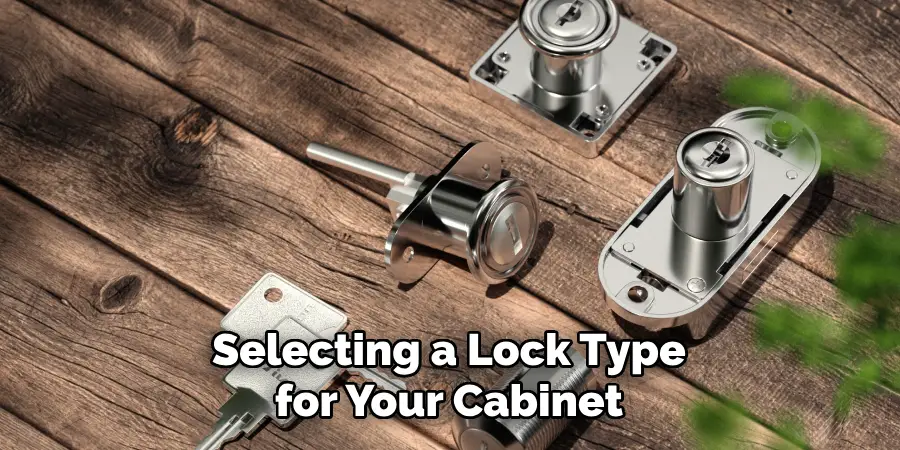
When selecting a lock type for your cabinet, it’s important to first evaluate the level of security it requires. Consider factors such as the value and sensitivity of the items stored in the cabinet, as well as its location within your office or home.
Cabinets storing high-value items or sensitive documents may require a more advanced locking mechanism, while cabinets in low-risk areas may only need a basic lock.
2. Determine the Use and Frequency of Access
Another important consideration is how often the cabinet will be accessed and by whom. If the cabinet is used frequently by multiple people, a keyless entry system or combination lock may be more convenient than traditional locks that require a physical key. This can also help prevent lost or stolen keys, which can compromise the security of your cabinet.
3. Consider the Cabinet Design
The design of your cabinet can also impact the type of lock that would be most suitable. For example, cabinets with sliding doors may require a different type of lock than those with hinged doors. Additionally, if your cabinet has a unique shape or size, you may need to look for specialized locks that can accommodate its design.
4. Look for Durability and Reliability
A lock is only effective if it can withstand attempts at forced entry. When selecting a lock type, make sure to consider its durability and reliability. High-quality locks made from strong materials such as steel or brass are generally more secure than cheaper options. It’s also important to choose a reputable brand with a proven track record of producing reliable locks.
5. Check for Secure Keyways
The keyway is the part of the lock where the key is inserted and turned to unlock it. It’s important to choose a lock with a secure keyway that cannot be easily picked or manipulated. This can be achieved by selecting locks with restricted keyways, which can only be duplicated by authorized individuals.
6. Explore Additional Security Features
In addition to the lock itself, there are other security features that you may want to consider for your cabinet. For example, some locks come with self-locking mechanisms or alarms that can alert you if someone tries to tamper with the lock. You may also want to install a CCTV camera near your cabinet for added security.
7. Consult a Professional Locksmith

If you’re still unsure about which type of lock would be best for your cabinet, it’s always a good idea to consult with a professional locksmith. They can assess your security needs and recommend the most suitable lock type based on their expertise and knowledge of different locking mechanisms.
Choosing the right lock type for your cabinet is crucial in ensuring the security of its contents. By evaluating the security needs, use and frequency of access, cabinet design, durability and reliability, keyway security, and additional features, you can make an informed decision on which lock type would be most suitable for your specific situation.
Additional Security Measures for Putting Locks on Cabinet Doors
1. Use Combination Locks
Combination locks offer an extra layer of security for cabinet doors. Unlike traditional key locks, combination locks do not require a physical key to open the cabinet. Instead, you can set a unique numeric code that only authorized individuals will know. This makes it difficult for intruders to pick the lock or duplicate a key.
2. Install Keyless Entry Systems
Another option for securing cabinet doors is to install keyless entry systems. These systems use electronic keypads or wireless sensors to unlock the cabinet. You can program multiple codes for different users and change them regularly for added security.
3. Add Deadbolt Locks
Deadbolt locks are commonly used on exterior doors, but they can also be installed on cabinet doors for increased security. These locks require a key to open and have a bolt that extends deep into the door frame, making it difficult to force open. Make sure to choose a sturdy deadbolt lock with at least a one-inch throw.
4. Use Magnetic Locks
Magnetic locks are an advanced type of locking mechanism that uses an electromagnetic force to secure the cabinet door. These locks are difficult to pick and can only be opened with a special key or an access control system, making them ideal for cabinets storing highly sensitive items.
5. Consider Biometric Locks
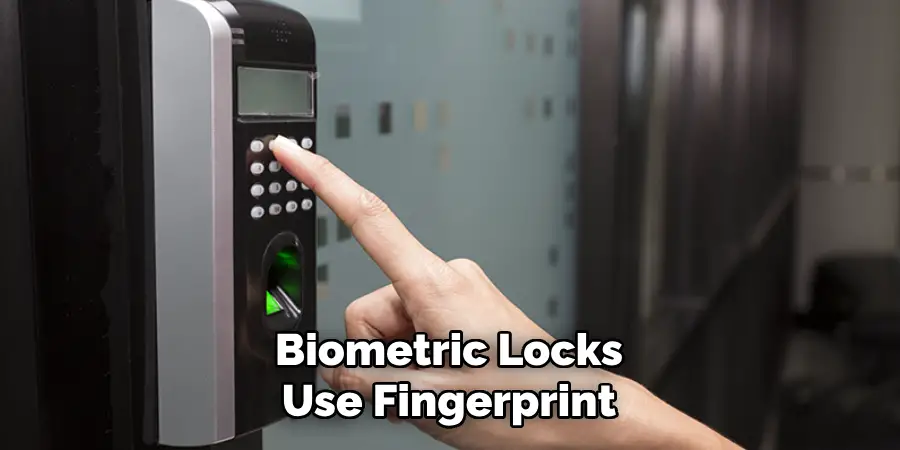
Biometric locks use fingerprint, retina scan, or facial recognition technology to provide secure access to cabinet doors. This type of lock is nearly impossible to break into as it requires a unique biological identifier to open the door. However, these locks can be expensive and may not be suitable for all types of cabinets.
6. Install Security Cameras
Installing security cameras can deter potential intruders from attempting to break into your cabinet doors. In case of a break-in, you will have video evidence that can help identify the perpetrator and provide valuable information to law enforcement.
7. Use Tamper-Proof Seals
For an extra layer of security, you can use tamper-proof seals on your cabinet doors. These seals are designed to break if someone tries to force open the door or remove the lock. This will alert you to any unauthorized access and make it difficult for intruders to gain entry unnoticed.
Overall, implementing these additional security measures can significantly increase the protection of your cabinet doors and the items stored inside. It is important to regularly assess and update your security measures to stay one step ahead of potential threats.
Alternate Methods for Securing Cabinet Doors Besides Locks
1. Hinges with Non-Removable Pins
One way to secure cabinet doors without using a traditional lock is by installing hinges with non-removable pins. These pins cannot be removed when the door is closed, making it difficult for intruders to take off the door and gain access to the contents inside.
2. Install Reinforced Door Jambs
Another alternative to locks is reinforcing the door jambs of your cabinet doors. This involves adding extra layers of material, such as metal or wood, to make it harder for intruders to kick in or force open the door.
3. Use Security Bars
Security bars are another effective method for securing cabinet doors. These bars can be placed across the front of the door and secured with a lock or key. They prevent the door from opening even if the lock is picking, providing an additional layer of protection.
4. Anchor Cabinets to Walls

For added security, cabinets can be anchored to walls using screws or bolts. This makes it harder for intruders to just pick up and remove the entire cabinet from its location. It also prevents them from easily accessing any items stored within.
5. Cover Keyholes or Handles
If you have a cabinet with a keyhole or handle that is easily accessible, consider covering it with a metal plate or piece of wood. This will make it harder for intruders to insert tools and pick the lock or force open the door.
6. Utilize Decoy Cabinets
Decoy cabinets are a clever way to divert attention from your valuable items and create a false sense of security. These cabinets can be filled with inexpensive or fake items, while the actual important items are stored in a more secure location.
7. Hire Professional Security Services
If you have highly sensitive or valuable items in your cabinets, it may be worth investing in professional security services. These services can provide round-the-clock monitoring and surveillance, as well as immediate response to any potential threats.
While locks are the most common method for securing cabinet doors, it is important to consider these alternate methods for added protection. Depending on the contents of your cabinets and your specific security needs, one or a combination of these methods may be more suitable for you.
Is There a Specific Way to Measure and Mark Where the Lock Should Be Placed on the Door?
Yes, there are a few ways to measure and mark where the lock should be placed on the door. Firstly, you can use a tape measure to accurately measure the distance between the edge of the door and the desired location for the lock. This will ensure that the lock is placed at an appropriate height and distance from other hardware or features on the door.
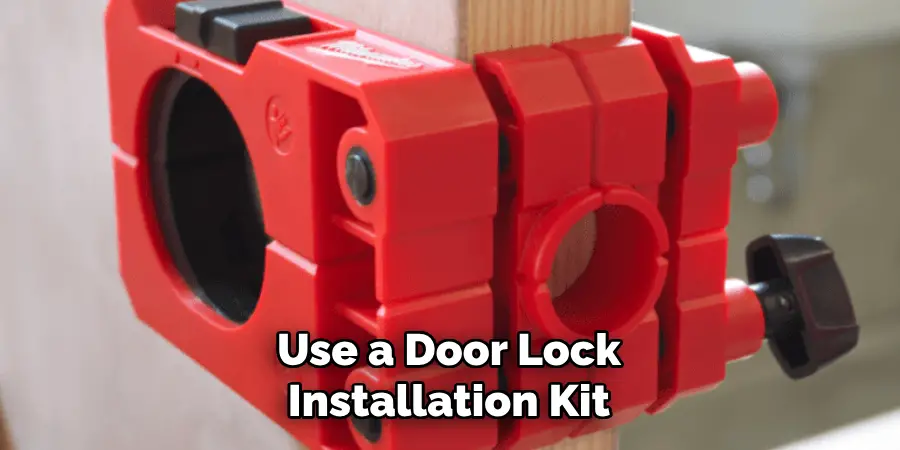
Another method is to use a door lock installation kit. This tool typically includes a drill bit, hole saw, and template to help guide the placement of the lock on the door. Simply follow the instructions provided with the kit for accurate positioning.
Another factor to consider when determining where to place the lock is accessibility. It’s important to make sure that the lock can easily be reached and operated from both the inside and outside of the door. This may also depend on factors such as the height of the person using the lock or any physical limitations they may have.
Conclusion
In conclusion, locking cabinet doors is an important step in ensuring the safety and security of your belongings. Not only does it prevent unauthorized access, but it also helps to keep your items organized and secure.
One of the key considerations when choosing locks for cabinet doors is the type of lock you want to use. There are various options available, such as traditional key locks, combination locks, and electronic locks.
It is important to assess your specific needs and budget before making a decision on which type of lock to invest in. Once you have selected the appropriate lock, it is crucial to properly install it on your cabinet doors. Make sure to follow the manufacturer’s instructions carefully and double check that the lock is securely attached. I hope reading this post has helped you learn how to put locks on cabinet doors. Make sure the safety precautions are carried out in the order listed.

